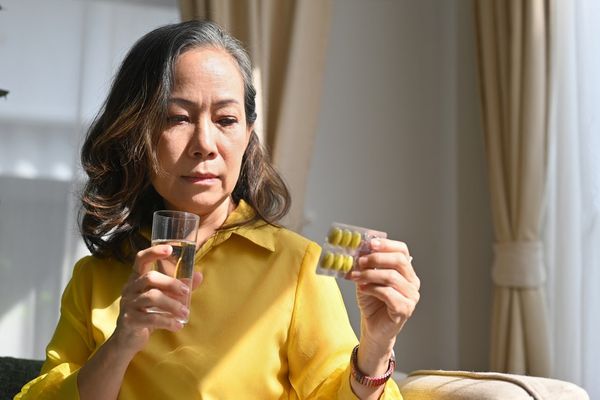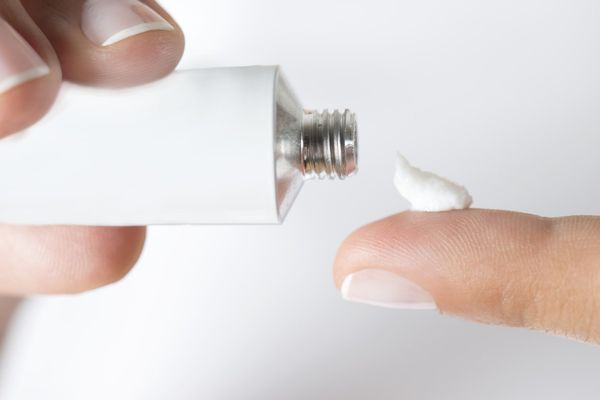Testosterone isn’t only a “men’s hormone” — women make it too, just in much smaller amounts. In women, testosterone helps with sexual desire and arousal and plays a role in bone, muscle and brain health. Many experts agree the evidence points to using testosterone therapy in women to treat low sexual desire that is upsetting or distressing after menopause, a condition called hypoactive sexual desire disorder (HSDD).
There’s no FDA‑approved testosterone made just for women in the United States yet, so care can feel confusing. Here's what you should know.
What is testosterone?
Testosterone is one of the body’s sex hormones that plays a big role in the reproductive system for both men and women. “In women, we think it might be important for bone mass, mood and other areas of health, but we’re still figuring that out,” said Nora Lansen, M.D., a family physician and chief medical officer at Elektra Health.
A lot more is known about testosterone’s direct effects for men, including its strong impact on libido, bone mass, mood and muscle growth, explained Lansen. "Average levels are about 10 to 20 times higher in men than in women," she said.
For women, testosterone levels slowly decline with age, reach a low point in the late 50s, then rise slightly again. Research shows this pattern has more to do with age than with the menopause transition itself.
What is testosterone used for?
Testosterone is best supported for postmenopausal women with low sexual desire that is upsetting or distressing, after a full check of other causes like medications, sleep, mood, pain and relationship factors, said Sameena Rahman, M.D., an OB‑GYN and sexual medicine specialist. Major medical groups including The Menopause Society follow this approach and advise careful dosing and monitoring.
Lansen noted that treatment is personal and that desire can be influenced by other factors. If a woman’s testosterone levels are normal or high, putting additional testosterone into her system would be neither safe nor helpful, she explained. While testosterone is most often prescribed postmenopause, Lansen said it may be considered for women in late perimenopause on a case-by-case basis after evaluation and lab review.
How testosterone therapy works
Before any prescription, your healthcare provider (HCP) should look at the whole picture. If low desire is still upsetting after that workup, testosterone may be considered for HSDD.
Forms and doses
In line with the International Society for the Study of Women’s Sexual Health (ISSWH), most experts prescribe very low-dose skin gels or creams that were designed for men but given at a fraction of the male dose. Many start their patients around one-tenth (some use even less) and adjust slowly. A small, measured amount is applied once a day to clean skin, such as the thigh. Pellets are usually avoided because they cannot be adjusted or removed and may raise levels too high, said pharmacist Jobby John, PharmD, founder of compounding pharmacy Lake Hills in Bee Cave, Texas.
Metered dosing helps
Compounded, metered‑dose devices let each “click” equal one dose, which cuts down on measuring errors and lowers transfer risk, noted John. Some providers also use tiny vaginal tablets for local tissue effects when appropriate, which are made per‑patient with a valid prescription, and should follow specific quality standards, John said.
Monitoring and safety
HCPs often check total testosterone about three to six weeks after starting or changing a dose, then every four to six months when stable. The goal is to keep levels in a normal premenopausal range and watch for side effects. Call your HCP if you notice:
- Acne
- More facial hair
- Thinning hair on the scalp
- A deeper voice
- Clitoral growth
We do not yet know the long-term effects on the heart, brain, bones or breast tissue. Practice shared decision-making with your HCP to determine whether the benefits of using testosterone outweigh the risks for you.
Insurance and cost
Because there is no FDA-approved testosterone for women in the U.S., the medicine is often not covered by insurance. Office visits and labs may be covered. “Compounded testosterone is almost never covered by insurance, and most women pay about $45 to $90 per month, depending on the formula,” said John. Coupons may lower the cost of male-labeled gels used at very low doses.
Access and equity
Off-label status and cash-pay costs make care harder for people with lower incomes and those who live far from specialty clinics. Research shows there are already gaps in menopause care by race and income. Women of color are less likely to be offered or to receive standard hormone therapy, and cost, bias and medical mistrust can all play a role in those disparities.
When a treatment is off‑label and cash‑pay, those gaps can widen. "Although it’s really great that menopause is a topic being increasingly discussed in the media, it’s not fair to provide menopause information to all but reserve treatment for only those who can afford it," said Lansen.
If cost or access is a barrier, ask about:
- Insurance‑friendly clinics (including Medicaid) and financial counseling
- Telehealth options and pharmacies that ship
- Cash prices and discounts for low‑dose, male‑labeled gels used off‑label
- Accredited compounding pharmacies (PCAB/NABP) and clear, metered dosing to avoid waste
The future of testosterone therapy for women
Researchers are working on women-specific formulations and better long-term safety data. Australia already has a testosterone cream dosed for women, and some experts want an FDA‑approved option in the U.S. so dosing and access are clearer. Until then, care will likely remain off‑label, with careful monitoring and attention to equity and cost.
- Hormone Therapy Saved My Life After Doctors Dismissed My Perimenopause Symptoms ›
- Avoid Pellets When Using Testosterone for Low Libido ›
- Global Guidance for Testosterone for HSDD ›







